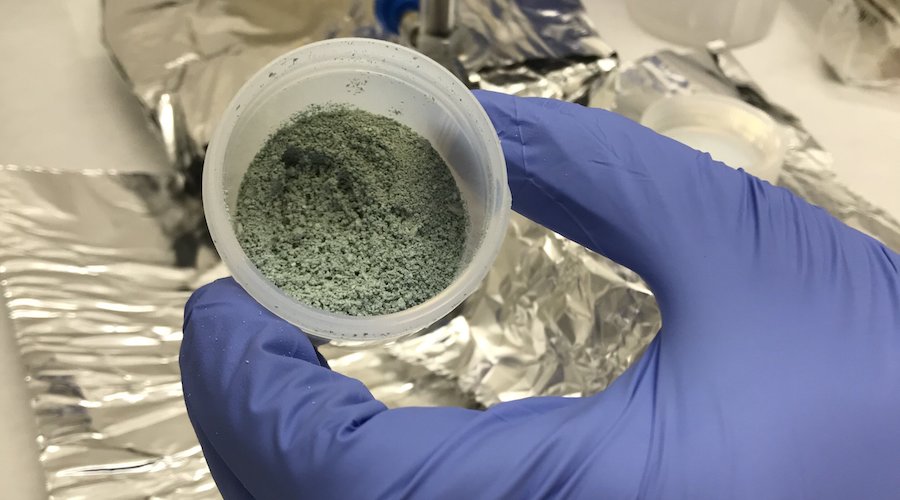UFH forms when uranium tetrafluoride, a radioactive salt routinely used in producing uranium metal, begins to break down after immersion in water for 12 hours or longer. Even though scientists have studied uranium and its power to split the atom for nearly a century, most of those studies have focused on intentional results rather than unintended byproducts like UFH.

“From World War II through the Cold War, we have decades of study, but the main concern was making things work from a production standpoint, like building bombs and powering reactors,” Andrew Miskowiec, lead author of the study, said in a media statement. “UFH wasn’t considered valuable for those purposes. That means it hasn’t been studied as closely and isn’t as well understood. We need to know as much as we can about these materials in order to know what to look for when we discover them in the wild.”
Each of uranium’s various molecular forms undergoes a unique set of vibrations, created by the dynamic motion of its atoms, that can act as a signature if scientists know what to look for. The research team used VISION, the world’s highest-resolution inelastic neutron scattering spectrometer, to bombard samples with neutrons, monitor the energy lost or gained, and capture the full range of UFH’s vibrations.
“For other common characterization techniques, we would have had to dissolve or otherwise destroy the sample to study it,” Ashley Shields, co-author of the paper, said. “If we don’t have a big sample to start with, we definitely don’t want to destroy it before extracting as much information as possible. Spectroscopy gives us a way to gather data and preserve the sample for further analysis.”
The supercomputer at play
Using the Oakridge lab’s 200-petaflop IBM AC922 supercomputing system and applying density functional theory, a quantum-mechanical approach to estimating materials’ structure, to model UFH’s properties, the scientists were able to obtain the first complete picture of UFH’s full vibrational spectrum for new insights into the compound’s atomic structure.
“These are extremely large, intricate structures with a lot of atoms constantly vibrating in all directions with very little symmetry,” Shields said. “Every break in the symmetry requires more calculations, increasing the compute time required to determine the vibrational properties. These computations allow us to visualize what kinds of vibrations these are, what the motion looks like, which atoms are participating in and causing each vibration, and at what frequency.”
The team used the data to compare the calculated vibrational spectrum to the experimental one measured at the lab’s Spallation Neutron Source, allowing for atomic-level identification of spectral features in the experimental data. The study required more than 115,000 node hours to render the results.
“We now have a better ability to identify this material in the field, and the results will be foundational for understanding other environmental aspects of the fuel cycle,” Miskowiec said.
In other words, the findings may enable better detection of the environmental pollutant and a better understanding of how environmental conditions influence the chemical behaviour of fuel cycle materials.




